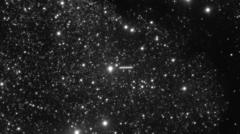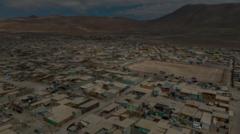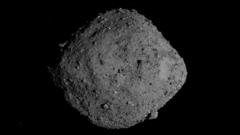Astronomers have made an exciting discovery with the identification of 3I/Atlas, an enigmatic interstellar object that may represent the oldest known comet. Researchers from the University of Oxford believe that this celestial body could be up to three billion years older than our solar system, making it a fascinating subject of study.
3I/Atlas, only the third interstellar object ever detected, was initially observed on July 1, 2025, by the ATLAS survey telescope located in Chile from a distance of roughly 670 million kilometers from the Sun. During a meeting of the UK’s Royal Astronomical Society in Durham, the preliminary findings regarding 3I/Atlas were revealed, generating significant excitement among the scientific community.
Matthew Hopkins, an astronomer at the University of Oxford who recently completed his PhD, emphasized the object's potential age, estimating it could be over seven billion years old. “This could be the most remarkable interstellar visitor yet,” he noted.
The object is believed to have originated from the Milky Way’s ‘thick disk’, an area populated by ancient stars that orbit above and below where most stars, including our Sun, are found. The researchers postulated that due to its formation in the vicinity of an old star, 3I/Atlas likely contains substantial amounts of water ice. As the object nears the Sun, heat will likely cause its surface to release vapor and dust, possibly creating a striking tail visible from Earth.
Co-author of the study, Professor Chris Lintott, described the significance of this discovery, stating, “This is an object from a part of the galaxy we've never seen up close before.” The likelihood of 3I/Atlas being older than our solar system stands at about two-thirds, according to the research team, suggesting that the comet has been journeying through interstellar space for billions of years.
Later this year, amateur astronomers should have the opportunity to observe 3I/Atlas as it becomes visible from Earth. Prior to the discovery of this comet, only two other interstellar objects had been identified: 1I/'Oumuamua in 2017 and 2I/Borisov in 2019.
With the impending full operational launch of the Vera C Rubin telescope in Chile, scientists anticipate the potential discovery of between 5 and 50 new interstellar objects as it begins its comprehensive survey of the southern night sky.


















